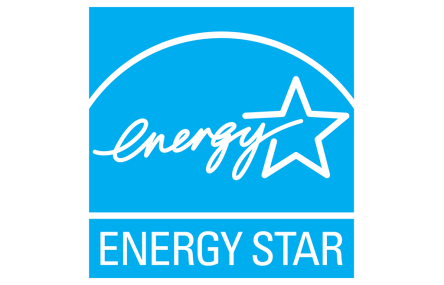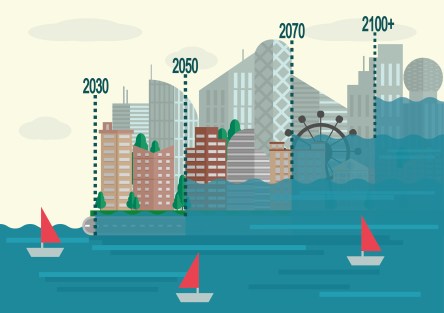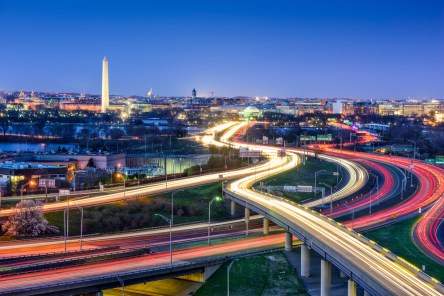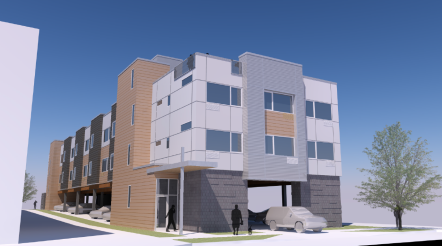Nearly four decades after President Carter adventurously installed solar panels on the White House, America’s energy transition away from fossil fuels has seen only modest progress. 2007 marked the first year in history when more than half of the world’s population lived in cities, and the U.N. estimated that, by 2030, urban settings will be home to nearly two thirds of the global population. However, it was just in March 2017 that monthly electricity generation from wind and solar exceeded 10% of total U.S. electricity generation for the first time. As America’s vibrant cities grow at an unprecedented pace, so does the importance of sustainable urban planning, power generation, transport systems, water and sanitation, and waste management. We set out to gauge how U.S. cities fare in terms of sustainability, and how the commercial real estate industry has embraced green building to support these efforts. We ended up with a ranking of 40 ‘sustainably powered’ U.S. cities. Read on to see how we did it and what the results show. Methodology: Our Scores, Explained For the purpose of this study, we looked at data on U.S. cities with a 100,000 population minimum, and present the 40 that achieved top scores: Arlington, Va.; Atlanta, Ga.; Austin, Texas; Baltimore, Md.; Boston, Mass.; Boulder, Colo.; Chicago, Il.; Cleveland, Ohio; Columbus, Ohio; Dallas, Texas; Denver, Colo.; Detroit, Mich.; Durham, N.C.; Eugene, Ore.; Hayward, Calif.; Houston, Texas; Indianapolis, Ind.; Knoxville, Tenn.; Lakewood, Colo.; Lancaster, PA; Las Vegas, NV; Los Angeles, CA; Minneapolis, MN; New York, NY; Oakland, CA; Philadelphia, PA; Phoenix, AZ; Pittsburgh, PA; Portland, OR; Reno, NV; Richmond, VA; San Antonio, TX; San Diego, CA; San Francisco, CA; Savannah, GA; Seattle, WA; St. Louis, MO; Tucson, AZ; Washington, D.C.; Yonkers, NY. The starting point of our research was to learn how each of...
Tenant Power
Awards for Smart Energy Use
The U.S. Environmental Protection Agency’s ENERGY STAR program has helped business owners and individuals save money and protect the environment through energy efficiency since 1992. Now there’s a new dimension to the program. In the fall of 2017, EPA launched the ENERGY STAR Tenant Space pilot program to promote energy efficiency in commercial tenant spaces. EPA recently recognized 48 office tenants that demonstrated commitment to energy efficiency and environmental stewardship. The award recipients met five energy efficiency criteria during the 10-month Tenant Space pilot program: estimate energy use, meter energy use, light efficiently, use efficient equipment and share data. Recipients of 2018 ENERGY STAR Charter Tenant Space Awards include Forest City Realty Trust Inc., Kilroy Realty Corp., LinkedIn and Shorenstein Realty Services LP. Some organizations, such as Cushman & Wakefield, Harvard Pilgrim Health Care, JLL and JPMorgan Chase, earned recognition for multiple locations. “Adhering to sustainable best practices not only enhances our bottom line, but it also highlights our broader efforts to consistently act as a responsible corporate citizen,” Jason Kern, CEO for LaSalle Americas, said in a statement in June following the designation of LaSalle’s corporate headquarters in Chicago as a Charter Tenant Space Award recipient. Along with verifying its electricity meters, LaSalle estimated the office’s energy consumption using an online tool developed by EPA with analytical support from the U.S. Department of Energy. The company documented its nearly 100% LED lighting fixtures, daylighting/occupancy sensors and nearly 100% ENERGY STAR certified equipment and appliances. LaSalle also established an ENERGY STAR Portfolio Manager account to measure energy and water consumption. The voluntary Tenant Space program was created by the Energy Efficiency Improvement Act of 2015, which encourages owners and tenants to implement high-performance energy efficiency measures in commercial buildings. EPA continues to analyze the...
Rising Concern
Sea Level Impact on Real Estate
Intense climate and weather-related events, such as hurricanes, hail and ice, heat and wind and inland flooding, are occurring around the world with alarming intensity. Three hurricanes in 2017 alone caused a combined $300 billion in damages. About 5 million people in the U.S. are within 4 feet of a local high-tide level. A United Nations report in 2016 noted that climate-related events could place real estate assets valued at $35 trillion at risk by 2070—about half of today’s global assets under management in any industry sector. By one estimate, a sea level rise of six feet would imperil U.S. coastal properties worth about $900 billion. How can real estate asset managers prepare for what could be an inevitable rise in sea levels and other manifestations of climate change? “Asset managers and investors already have access to energy efficiency data from providers like Yardi. Now they need project-level natural hazard data that includes climate change projections. This is something the climate resilience field is working on, with a variety of firm jockeying to be first with the rollout of their proprietary software,” says Joyce Coffee, president of Climate Resilience Consulting and a senior sustainability fellow at Arizona State University’s Global Institute of Sustainability. Some cities, such as Cedar Rapids, Iowa, are countering weather damage risk by building flood control systems. Other metros, like Philadelphia, Detroit and Washington, D.C., have increased sewage fees, spurring building owners to consider adopting more stringent water conservation efforts. Many other officials and private citizens, of course, focus their efforts on identifying and mitigating sources of climate change. Real estate investors, for their part, are incorporating climate risk into their analysis and avoiding risky investments. A whitepaper released by BlackRock in 2016 noted, “Investors can no longer ignore climate change....
Green Lease Leaders
Energy Best Practices
Commercial building owners, tenants and brokers need the right tools to incorporate energy efficiency into leases. A program called Green Lease Leaders stands ready to provide them. Green Lease Leaders helps real estate practitioners create leases that promote collaboration on investments such as high-efficiency rooftop air handling units, lighting retrofits, water irrigation upgrades and solar panels. The program was the subject of a recent webinar, “How to Become a Green Lease Leader: The Latest in High-Performance Leasing Practices and Recognition.” Presenters included Holly Carr, a Department of Energy technology program specialist, Sara Neff, senior vice president of sustainability for Yardi client Kilroy Realty Corporation, and Alexandra Harry, program manager, market engagement for the Institute for Market Transformation (IMT). Green Lease Leaders was developed in 2014 by IMT, a Washington, D.C. nonprofit and the webinar’s host, with support from the Energy Department’s Better Buildings Alliance. IMT works to unlock building energy efficiency that it says could save the U.S. office market $3.3 billion annually and cut energy consumption by 22% in leased buildings. The program currently includes landlords, tenants and brokers who represent 1.3 billion square feet of commercial, industrial and retail space. “Tenants and landlords share an obligation to understand how much energy their buildings use and jointly share the cost of upgrades as well as the resulting maintenance savings and best practices,” Carr said. “Benefits of green leasing include reducing utility bills by up to 51 cents per square foot, increased net operating income, reduced occupancy costs, increased occupant satisfaction, fewer greenhouse gas emissions and improved landlord-tenant communication and relationships.” Along with defining new best practices for energy efficiency in buildings, the program also offers participants technical support, peer networking opportunities, tools for comparing current leases to Green Lease Leaders standards and other...
Tips for Tips
Business Energy Management
Editor’s note: The following piece and accompanying graphics are re-published with permission from Home Energy Magazine. Behavioral recommendations, or tips, are an integral piece of many energy efficiency programs, ranging from marketing materials (e.g., brochures) to in-home audits, to Home and Business Energy Reports (such as the report shown below). Though information is known to be a critical component of effective interventions, it is important to consider human motivations and needs for this to be effective. This article synthesizes findings from a series of empirical research conducted by See Change Institute and Yardi (formerly Pulse) Energy’s Business Energy Report (BER) program[1]. By breaking apart the tips from the energy report (sample below) and breaking down the components of those tips even further, we were able to test the impact of variations of different components of tips, with the goal of optimizing messaging to incite pro-efficiency behavior in BER recipients[2]. In synthesizing these findings, we identified five key insights on tip content, form, structure, and imaging, or “Tips for Tips”. 1. Put People in Pictures First, we tested the impact of having people in images above the tips – one tip had a picture of equipment, the other included someone actually engaging in the behavior being promoted. We found that tips with an image of a person engaging in the action were rated significantly higher in terms of behavioral intention (that is, how much someone self-reports intention to complete the recommended action).We recommend considering images that do include people, especially people engaging in the recommended action. 2. Tell People What to Do Next, we tested the difference between a “subject title” (e.g., “Ceiling Fans”) and an “action title” (e.g.,”Use fans more & A/C less”). We found that using an action title led people...
Bentall Kennedy
ROI on Sustainable Assets
Yardi client Bentall Kennedy recently released a report that may change the way that the industry sees sustainable building. Giselle Gagnon, Senior Vice President, Strategic Resources Group explains, “Our team at Bentall Kennedy has long been committed to implementing sustainability practices across our managed property portfolio – for us it demonstrates to our clients and tenants that we are investing soundly and sustainably,” she says. “So we commissioned a study to seek research-based evidence to test our hypothesis that green office building certifications deliver higher value.” Sustainability within the commercial sector is a vital component of environmental health and corporate efficiency. Commercial properties are responsible for 81 percent of electricity consumption across North American and Europe. The industry also accounts for 40 percent of all energy consumed in those continents. Until now, stakeholders did not have the resources needed to determine which green building certification would be the most effective, yielding the highest returns and making the smallest impact on the environment. Previous studies fell short in a number of ways: All were based on publicly available information, such as posted asking rents, green building certifications and the sale price of assets. The majority excluded data on concessions and their effect on net rents. Many studies overlooked intangible benefits entirely. None examined actual in-depth, diverse metrics across a large office portfolio for as long as 10 years. As a recognized leader in Responsible Property Investing, Bentall Kennedy filled those voids. The company commissioned a comprehensive, long-term study on the benefits of sustainable certifications for commercial properties. In late 2015, The Journal of Portfolio Management published a report of the study entitled, “Green Certification and Building Performance: Implications for Tangibles and Intangibles.” “The study is unique in that, in addition to financial metrics, it looks...
No AC, Just DC
Washington's Microgrids
By eliminating the need to convert DC electricity to AC voltage for commercial and residential use, a new generation of Microgrids is set to upend the traditional energy infrastructure. While Edison beat Tesla in the first go-around, the latest battle of the voltage could have an entirely different outcome. Alternative power sources and smart fixtures provide much of the fodder for energy efficiency strategies, but one elephant in the room is AC/DC conversion. Currently, AC/DC conversion results in a 20% energy loss, not insignificant when you consider residential and commercial buildings consume 65% of all energy generated. By eliminating that conversion loss, DC microgrids are poised to significantly impact energy use and generation both in the US and internationally. Clean and Lean The benefits associated with DC microgrids include lower energy losses and an increase in utilization of onsite generation. DC microgrids are also more reliable and resilient, continuing to run unabated even as the grid goes down and power outages run rampant. And because DC microgrids ease the incorporation of onsite solar (and perhaps, someday, wind), there’s a significant reduction in greenhouse gas emissions and carbon footprint. Not only can DC microgrids improve energy efficiency and reduce reliance on the grid, they can also help buildings meet net zero energy standards. At the November 2015 Greenbuild Expo in Washington DC, the Net Zero Energy Pavilion highlighted many microgrid technologies. Completely solar powered, the pavilion’s photovoltaic panels connected directly to the building’s lighting and appliances in a powerful representation of DC microgrid potential. Work and Play Not only does the incorporation of DC microgrids improve energy efficiency, they provide greater resource management. By enabling partial (if not total) decoupling from the grid, DC microgrids allow building managers and residents to exert more control over...
Introducing iUnit
Modular + Energy Smart
Believe it or not, iUnit is not the next device a certain ubiquitous technology company wants you to run out and buy. Rather, it’s a new modular housing project coming to Denver, Colo. in 2015, blending smart energy use, wireless connectivity, green construction and the urban living preferences of American Millennials. iUnit is intended to challenge the way we think about apartment living today, says founder Brice Leconte. A Washington, D.C. entrepreneur with a passion for startup technology, Leconte is currently an Entrepreneur in Residence at the University of Maryland as well as an advisor and mentor at Georgetown University. “iUnit is really a reflection of how I see the world and what I want to do with commercial real estate,” said Leconte, who worked on large single-family home developments early in his career. iUnit at Highland Park is his first foray into the multi-family space. We recently spoke to him about the project and what makes it unique. Tell us about iUnit. What’s it all about? Leconte: There are a lot of things in real estate that don’t make sense to me. One of them is on the modular front – why we are still building buildings out in the elements, while they are being rained and snowed on. I’ve wanted to build differently for a long time, and modular construction has always made sense to me. Building in a controlled environment, we end up with a much better, greener product, and better worker safety. That’s the method we’ve chosen for our multi-family building. We will use a factory in Idaho for the module construction. The other thing that has never made sense to me has how commercial real estate has lagged behind in integrating technology into its buildings. How can we introduce...








